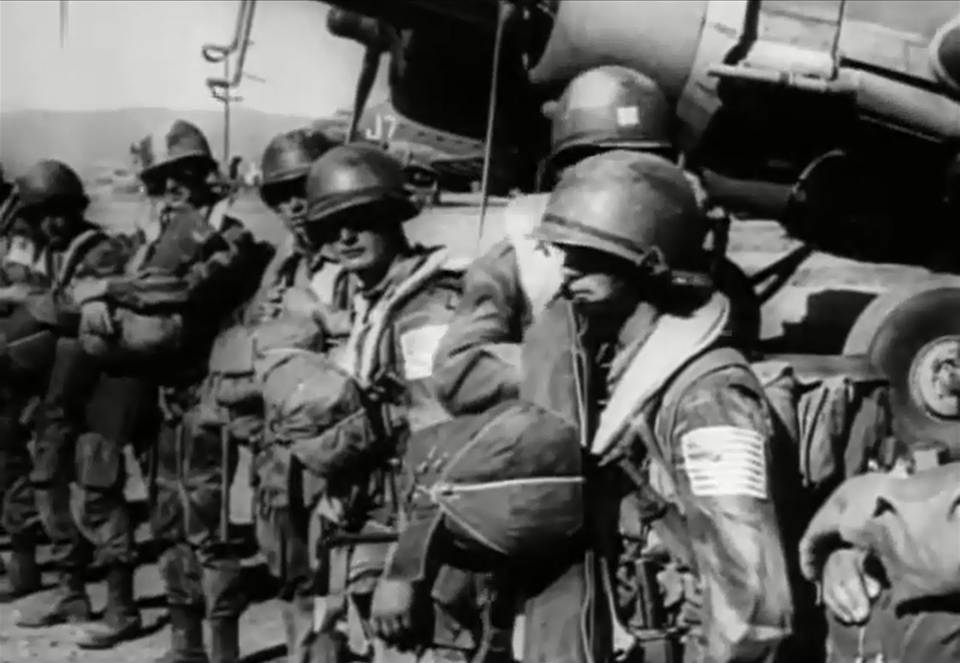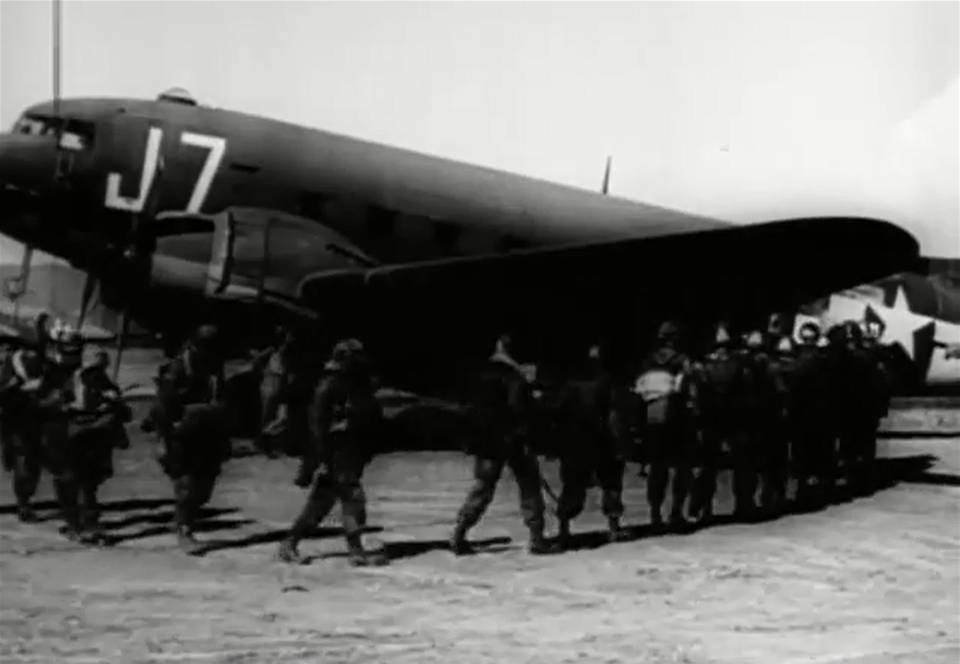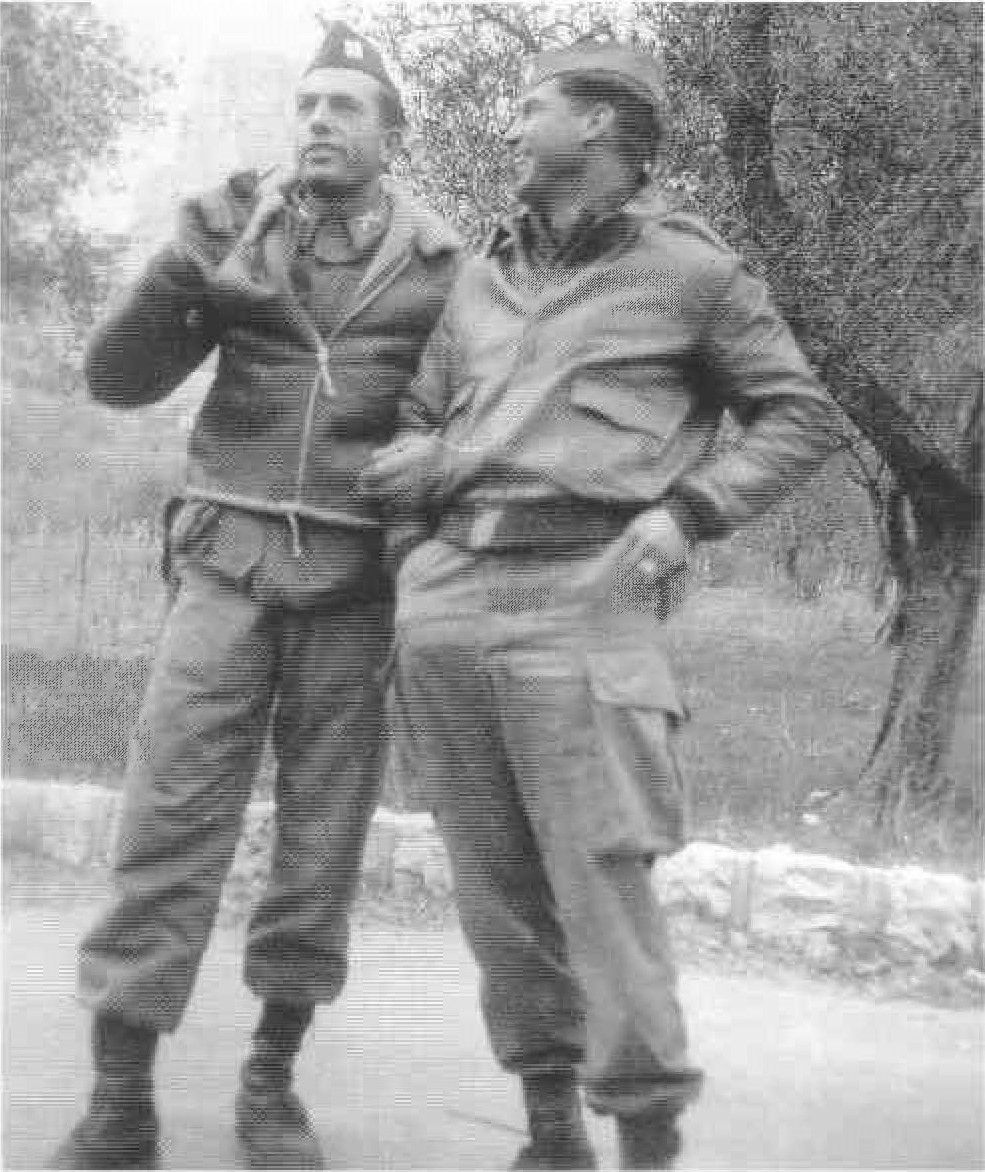

NAME: Ernest T. 'Bud' Siegel
ASN: O-1283152
PLACE OF BIRTH:
DATE OF BIRTH:
DATES OF SERVICE: ?? ??? 1940 - ?? ??? 1945
UNIT ASSIGNED: CASUAL CO. (Replacements)
HQ 2 Bn 503rd Parachute Infantry Regiment
HQ 2nd Bn 509th Parachute Infantry Regiment
HQ 509th Parachute Infantry Battalion
A Co 509th Parachute Infantry Battalion
CAMPAIGNS: Algeria - French Morocco, Tunisia, Naples - Foggia, Anzio, Rome - Arno, Southern France, Ardennes - Alsace, Rhineland
AWARDS (WWII): Combat Infantryman Badge, Parachutist Badge with two combat jump stars (Avellino, Southern France), Bronze Star Medal, Purple Heart Medal with two oak leaf clusters, EAME Campaign Medal with arrowhead and seven bronze star devices, American Defense Medal World War II Victory Medal, French Legion of Merit, French 3rd Zouaves Regiment Badge
SUMMARY OF SERVICE:
Was captain of ice hockey team
Took exam for NY State Trooper got assigned to Malone, NY Troop B
00 000 1940 - Entered Service at Malone, NY
Was able to type so they made him a company clerk. Working in the office information arrived one day asking for candidates for Officer Candidate School. He applied and was accepted. Attended OCS Class 8 at Fort Benning, GA
1942 - The 509th in England was making preparations for the invasion of North Africa. As part of the preparations, requisitions were sent back to the states for replacements in personnel and equipment in anticipation of possible combat losses. 2nd Lt Siegel who had only been a 2nd Lt for three months was put in charge of 12 2nd Lts and 129 enlisted to get them from Georgia to NY Port of Embarkation and then on to England to join the 509th. The group of replacements was referred to a Casual Company. Lt Siegel did not find out why he was put in charge until he got to England, Apparently when the officers were listed on the orders the 2 indicating 2nd Lt was left off the rank next to his name and so it was assumed he was a 1st Lt.
Served under Capt. Cole, Company Commander
Operation Torch was part of rear detachment that arrived in North Africa by ship.
00 Mar 1943 - Lieutenant, Platoon Leader, Weapons Platoon, HQ 2nd Bn 509th PIR
00 Aug 1943 - Lt Siegel and Lt Hugh DeLury went of pass to Tunis for the marriage of Lt William Kautz to a 12th Army Air Force nurse. Both stayed beyond their pass and forgot to request a two day extension. Both were reported AWOL. Upon return Lt Siegel was confined to quarters, lost his position as Weapons Platoon Leader and was place as Assistant Platoon Leader under Lt Alvin Sieqfriedt. Fortunately they were not court-martialed.
Lieutenant, Mortar Platoon
14 Sep 1943 - 1st Lt. Siegel Assigned to HQ Co. Participated in jump into Avellino, Italy. Plane 41-7852 Pilot - 1st Lt J. T. Luke, Co-Pilot - 2nd Lt M. B. Butler, Crew Chief - T/Sgt. Warren, Radio Operator - Cpl. Sellers. 1st Lt. Siegel was Jumpmaster with 18 others on board.
14 Sep 1943 - Lt Siegel finds six men following the jump Sgt Charles Holmes, Sgt Elwood Barnhardt, Pvt. Joseph Barnessi and three others. While making their way to Avellino they came across and elderly man and attempted to ask for directions. Other locals in the area woke up and began kissing the American Flag on their shoulder and pressing religious medals into their hands. Frustrated with the attention and unable to get information he called Sgt. Barnessi forward to translate only to find out that he really did not know Italian. They did figure out that Avellino was distant and there were many Germans. They decided to move into a cornfield set up a defense and wait for the situation to develop.
15 Sep 1943 - At dawn a truckload of Germans arrived at a nearby farmhouse. The farmer did not give away the Americans. A German soldier did walk down a path toward the paratroopers but once he reached the end he called back that he did not see anything there and returned to the truck and they left. Later a priest approached Lt Siegel and in broken English and told them they were 60 to 80 walking miles from Avellino and approximately two inches off of his map. There were many German roadblocks along the route. It was best for them to stay put.
Through a teenager and the help of several locals Lt Siegels group moved by night and rested during the day. One afternoon a German Anti-Aircraft gun moved into a area nearby. After the gun opened up on allied bombers, allied fighters strafed the position and nearly hit Lt Siegels group in the process.
A few nights later Lt Siegels group linked up with Lt Siegfriedt and ten other paratroopers compared notes and determined allied forces would be pushing into their sector soon.
26 Sep 1943 - Lt Siegels group now numbered 18 men and Lt Siegfriedts group numbered 13. They continued to lay low between Avellino and Sarno and seek targets of opportunity but none came. Italian homes in the area began to be shelled by allied guns despite no Germans living in them. Italians did not understand that the paratroopers had no way to communicate with the guns to prevent the shelling, they could only help the wounded Italians.
27 Sep 1943 - Next morning the priet and the teenager arrived with news that an armored vehicle with a white star had been seen on the other side of the mountain. Siegel and Holmes decided to dress in civilian attire and go with the boy to make contact. By now their beards had become pretty full to help blend in with the locals. Since they did not speak German, they worked out a plan with the teenager that if they encountered Germans they would appear as if they escaped form the local asylum and the teen would torment them. If the Germans pressed and Lt Siegel felt they needed to shoot their way out he would yell "Wallyo" and the teen would drop to the ground.
28 Sep 1943 - They passed only one group of Germans breaking down their anti-aircraft gun to withdrawal to another position. A mile and a half further down the road they came to a railroad tunnel filled with Italian refugees. The refugees immediately figured out that they were not Italians and murmurs grew as they passed through to the other side. At the other end was a British Bren Gun Carrier with a crew brewing tea. Lt Siegel identified himself to the British lieutenant and requested he be taken to headquarters to so he could stop the shelling of Italian civilian positions. Siegel showed him his dogtags. Finally convinced, the British lieutenant said "Blimey! I say, I never would have taken you for a Yank in those bloomin' Eyetie duds! Good show!" They hoped into the Bren carrier and went down the road to the crossroads at Nocera where they ran into a line of parked British armored vehicles with troops laid out and Italians selling produce. Maj. Gen. George Erskine, Commander of British 7th Armored Division surrounded by other officers was looking over maps. The British lieutenant tried to get the generals attention but eventually did so through one of the staff officers. Lt Siegel then brief over the map the situation in the area and the General was appreciative and directed his artillery officer to adjust their fire accordingly.
22 Jan 1944 - Participated in Operation SHINGLE the amphibious invasion of Anzio, Italy
Wounded in groin area from shrapnel
Captain, Company Commander, A Company, 509th PIB
00 Aug 1944 - Promoted to Captain while in Italy just prior to the invasion of Southern France
15 Aug 1944 - Participated in Operation DRAGOON (RUGBY) the invasion of Southern France. Was Jumpmaster of first plane in the main body for Drop Zone C
15 Aug 1944 - "This was my first combat mission as A Company C.O. and I wanted our company to do a job we could be proud of. This mission had better planning than any mission since the initial invasion of North Africa by our battalion. The battalion mission was to secure the area to facilitate the seaborne forces and the glider wave coming in the next morning. Since A Company was chosen to lead the invasion I had my headquarters section with communications in the lead plane. I wanted to be the first to jump and that was the way the jump came out."
15 Aug 1944 - "We were taking off from a field near Grosseto (FOLLONICA) Italy. I spoke to Colonel Schmidt (Col. Charles M. Smith, Group Commander, 442nd TCG) who was to be the lead plane pilot. He assured me he would land me next to the woodshed I was planning to make our first headquarters."
15 Aug 1944 - "There was no discernible flak or ground fire when we went out the door. A short drop and I hung up in a tree about twenty feet from the ground. I was able to bounce myself down to a stand up landing and proceeded to pick up our stick."
15 Aug 1944 - "We were able to regroup within the first half hour and I was waiting for Edward F. Wojick to bring up the large radio which would connect us with battalion HQ. and the other companies. Wojick said he could not find the equipment canister with the big radio. I was unhappy and told him not to come back until he found it. Little did I know that I wouldn't see him for over three weeks."
15 Aug 1944 - "By dawn we were on top of a high hill overlooking Le Muy. We had advanced some patrols (Lt John Fraziers Platoon) on the road into Le Muy, we had secured the bridge which was part of our mission. I was feeling pretty smug about securing the bridge and having patrols on their way to Le Muy when Colonel Yarborough came up behind me."
15 Aug 1944 - "He formally asked 'Captain, what are your plans to attack?' My plans were nebulous since I had no idea whether there were Jerries in Le Muy or not. The question answered itself when the patrol sent into Le Muy reported on the walkie talkie that there was a formation of Germans marching northward into Le Muy. We decided we were in an excellent position to trap them. Lt Kenneth Shaker sent a patrol to the north end of the town. They had set up an O.P. in a small farmhouse a few hundred yards from the one road going through the village. We had bad communications with them and we were using runners as messengers. Lt Hoyt Livingston told me he would get Lt Sol Weber's communication section to string wire. I suggested that he tap into the local phone wire and put a hand set with our forward Observation Post. He was able to accomplish this within a half hour."
15 Aug 1944 - "All this time a column of German infantry and horse drawn equipment was marching through Le Muy and turning past our forward command post. The light machine guns and mortars were deployed where they could rake the road. We issued orders to all units to hold fire until ordered."
15 Aug 1944 - "Our northern patrol was along the road waiting for the columns to reach them. The Germans became suspicious and opened fore into the woods. The order was given to open fire and all hell broke loose. The German column broke up. Some run to a marshy area forward of our position and another group took up a position in a farmhouse near our O.P. and set up a machine gun in the attic."
15 Aug 1944 - "The German group in the tall grass started to fire over our heads. I turned around to yell at the guys behind me to keep their heads down. Behind me were Colonel Yaarborough and Maj. Gen. Walker. I learned that he had elements of the 45th Division ready as soon as we had secured Le Muy. We captured the remaining column and they were marched to the rear. We moved into Le Muy and the 45th Division went forward. We regrouped and set up a field camp on the outskirts. It was early nightfall by that time. Rumors were that Capt. Miller's whole lead plane had jumped over the water near the beach and none had been heard of."
Wounded in shoulder from shrapnel near Le Muy
21 Aug 1944 - 2000 Hrs - Capt. Siegel conducts leaders recon with Lt Fraizer along Castle Ridge in preparation for an attack the next day on hill San Peyre. They were shelled twice on the recon. Returned to friendly lines at 2300."
22 Aug 1944 - 0300 Hrs - A Company moves into position in preparation for attack.
22 Aug 1944 - 0600 Hrs - A Company passes through B and C Company lines and assaults hill San Peyre.
22 Aug 1944 - 0730 Hrs - A Company secures hill San Peyre.
23 Aug 1944 - A Company continues attack toward Cannes
Wounded in head, hand and leg from shrapnel enroute to Cannes. Evacuated to hospital. A Company command is passed to Lt Ken Shaker
24 Dec 1944 - "Captured south of Manhay, Belgium. Jerry machine gun shot up my jeep. My driver (Henry Eliszewski) bailed out the drivers side and escaped. A private whose pant leg was caught on the jeep gear shift and I was captured, weapons taken and ordered by a Jerry Sgt to be shot! Luckily, our tanks came up the road and we were pushed to the ground. The tank commander was shot in the finger and the tank thought we were Jerries and fired .30 cal MG at us. They couldn't depress enough to hit us. Then the cannon was fired with the same results the cannon round couldn't explode because of deep snow. The private who was also prisoner said do you think the Germans will be lenient with us? I said no hang onto my hand. We had no sign or countersign we yelled at the tank "Joe Crone" ballplayer name all we got was BS from tank. The private and I at my signal run up the side of the steep road and got behind our tank and we were able to talk to the Commander. He was hitting the German who was next to us, the German said to me in German _________ _______where they took care of him. We the private and I walked the half mile to where A Co my company were dug in. There is more to escapades the next morning."
00 000 1946 - Honorably Discharged, Hallaran Hosk?
Got married and had three children.
Took Civil Service Exam and went to work for D.A. Sufolk City, NY
Became a Police Inspector and retired at that position.
Took up making duck decoys
04 October 2013 - Passed away
Listed on page 101, 107, 134, 138, 145 - 146, 159 - 160, 262 - 263, 266 - 267, 281, 283, 291, 314in the book Stand in the Door by Charlie Doyle and Terrell Stewart
Listed on page 67, 115 in the book First Airborne Task Force by Michel DeTrez

Capt. Bud Siegel performs final jumpmaster checks of his troopers prior to boarding for the invasion of Southern France. Photo taken 14 Aug 1944 at Follonica Airfield, Italy. Of interest in this photo is the letter A applied to back of helmets with medical tape per instructions for easy indentification in dark morning hours to aid in assembly. Once assembled tape was removed. The J7 on the side of the aircraft was the Squadron designation for the 303rd Troop Carrier Squadron which was one of four Squadrons that made up the 442nd Troop Carrier Group. In front of the J7 and just below the cockpit window is a small antenna which was part of the REBECCA homing set. These were on lead aircraft in the formation to recieve the signal from the Pathfinders EUREKA Set.

Capt. Bud Siegel facing toward the camera and with the white Captain bars painted on his helmet continues his inspections







Capt. Bud Siegel, A Co Commander and Capt. Jess Walls, C Co Commander in Southern France
(ALL IMAGES AND INFORMATION ON THIS PAGE IS PROPERTY OF THE FAMILY AND MAY NOT BE USED WITHOUT PERMISSION. PLEASE CONTACT THE WEBMASTER AT THE E-MAIL BELOW)
©2006 509thgeronimo.org. All Rights Reserved.